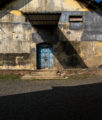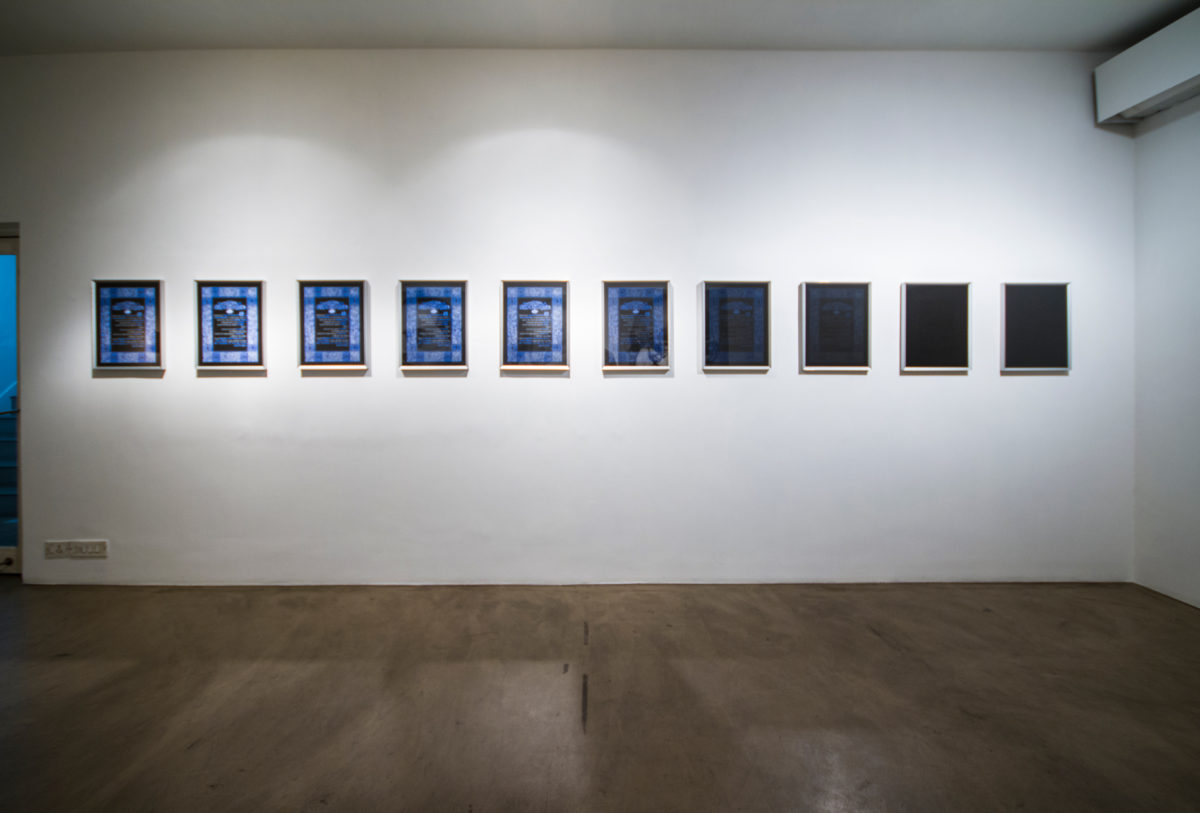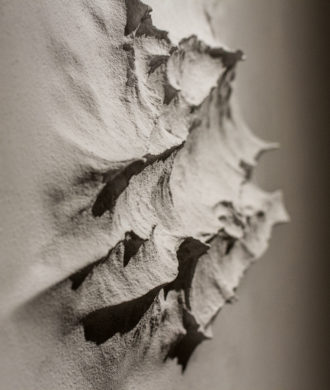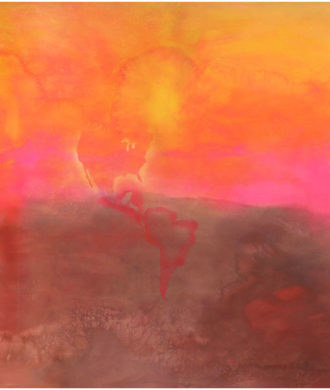The Dissidence Doctrine
Riyas Komu showcased Holy Shiver, a solo exhibition responding to a State in deliberate conflict with its founding principles. The title ‘Holy Shiver’ is a reference to the conceptual strand discussed by the Nobel Prize winning ethologist, Konrad Lorenz. Komu draws on the philosophy of “militant enthusiasm” to produce a series of oil portraits, woodcuts, videos, installations, and archival prints.
It was the end of winter and the capital, still hazy with smog, was hosting some of the arts most luminous exhibitions to kick-start the year. We headed to Vadehra Art Gallery in Defence Colony to meet Riyas Komu, one of the most prolific artists from the sub-continent. He has been at the forefront of art activism, and in the past decade, has been a catalyst in increasing the socio-economic currency of arts in India in ways deemed impossible by market experts.
The exhibition, ‘Holy Shiver’ charts an upward graph of our history that is marred by violence and injustice. It has been in the making for roughly two years (or maybe more) as Riyas’ work is, in many ways, always developing; layers added and edited, thoughts revisited and strengthened. His art evolves with conviction, anchored on his ideology. An ideology influenced by his Gandhian father, and nurtured in the socialist and secular climes of Kerala.
Riyas’ work is a force, a required voice in art activism in India. His art evolves over time. From his residencies to his curatorial works or through his collaborations, his mind is constantly looking inwards and outwards, connecting the dots with his evolving practice, between his secular beliefs, his understanding of Gandhi-ism and the reality he breathes.
As you step in to his solo show, you already feel as if you have stumbled outside your comforting urban bubble to land on hard earth, singed with disquiet. Riyas’ exhibition hits you like a runaway train. There is a heavy air of growing dissent that surrounds his art, and it fills your lungs with black smoke. Each installation is interacting, exchanging, and passing the burning flag on to the next. Reflections deepen, there are cultural cues everywhere, and the sheer silence of it all becomes unbearably loud. At one point as you stand looking straight into the eyes of Ambedkar, the father of our constitution, you wither as he weighs in on your fence-sitting compliance, the cowardice of your still voice as Mahatma calls it.
The show, ‘Holy Shiver’, derives its name from the tingling sensation that makes your hair stand on its ends as you become acutely aware of imminent danger. A cornered animal shivering in fear, spine arched, pupils dilated, can look very threatening as he feels very threatened. This animalistic instinct is seen through the lens of partisan patterns, divisive politics that fuels manic militant awakenings. That physiological response of flight-or-fight or in this case kill or be killed, curates a deliberation that weighs in on our constitution. The exhibition, in essence, is singular. Each artwork forms a crucial cog with the next in the run-up to its final deliverance.
The wall that greets you into the exhibition is filled with woodcuts. Each an image from our past, culled from the news cycle. Every image, replayed in different formats year after year, of seeping inequality and undemocratic violence. Partition, communal riots, protests, death…Riyas lays out image after image of iconic clippings, each becomes a marking of the system’s failure, like the artist states – a moment of ‘militant enthusiasm’. It is a wall, simplistically etched in chronological order with over a decade of bloodshed. Like a termite infestation on civilization, the butchery spreads and shreds the fabric of a free country.
One look at the opposing wall, and the artist pulls us back into a righteous time. Here, Riyas Komu has meticulously recreated the original pages of the constitution. When the constitution was initially drafted, it was artfully decorated by Nandalal Bose and his students. Each page is symbolically illustrated with Indian iconography, creating a visual tapestry of our culture and diversity. The calligraphy by Prem Behari Narain Raizada in Hindi and English craft a document that was a piece of art as much as it was the charter of our republic. It took 5 years to produce the first two copies. Today they are sealed and preserved in helium-filled cases in the library of Parliament. When one absorbs the sheer effort and thought that went into the making of the document, it brims with devotion. The collective hopes and dreams of a new nation shine through, along with its purpose of social justice and equality. Riyas’ rendition of the constitution is thorough. Each page of this recreation lines the wall, and then transitions to become a negative print of the original. An installation of a rusted jungle punctuates the wall and the emblem peeps out through the corrosion. A thirsty lion – fierce, tame, unaware, satiates his thirst in front. It is as if the artist has tabulated the constitutional timeline of how its value turned from dream to dust. One struggles to read Prem Behari Narain’s identic calligraphy. The struggle gives it an overwhelming helplessness. The point of invertedness wherein the constitution is in negative, the lower part wiped off is strongly evocative of censorship. A sense which the artist wilfully enters into his art to make you realise how your fundamental rights can be taken away from you. You are in its shadows where the light of its justice avoids you. As you stand behind the constitution, threatened by its indifference, you also seem threatening to its existence, like a felon. The Holy Shiver deepens the wound.
The room with the Lutyens Chair and The Dancing Girl of Harappa – a symbol of independence of her times, behind whom hangs an oil of a young artist. She is the woman of today, a Gen Z. In this succession sequence, the politically charged Lutyens Chair sits like a vulture. Decades of misrule, crony capitalism, populism, bureaucracy, elitism all tie the cane chair, and build it up to a bruising, dark depiction. The Holy Shiver becomes a historical archive of identity in the times of democracy.
If independence was a fight that gave us hope, then this art is telling us to disenthrall ourselves. There is work yet to be done, mud to be raked, knees to be bruised, blood to be let. His installation of the murdered man reminded me of Amiri Baraka’s verses:
“After so many years of trying to enter their kingdoms, now they suffer in tears.”
Considering the subjects, there is an uncommon tenderness in the blueprint of this installation. It is sentimental. His art from the oils, juxtaposing Gandhi and Ambedkar, or his archival prints, all come in waves, washing over you.
Like a growing war cry that no walls can stop, this art demands liberation. To grasp the realities of the skies our fathers walk under, and the earth our mother’s touch, to comprehend that we are all connected. The hurt from the bruises of one will travel to pain and scar the other. That is not karma, it is just science.
Riyas Komu has mastered this fine art of crafting calibrated discomfort. An inquisition is hardwired into his work. When you walk away from his exhibition, what stays with you is his voice. His art sweeps through like a kamikaze lashing out about suppression, constitutional censorship of rights and equality, the dereliction of founding ideologies and he says it all without holding back. This is what makes his exhibition mandatory. I hope his exhibition travels, for I hope his voice travels.









